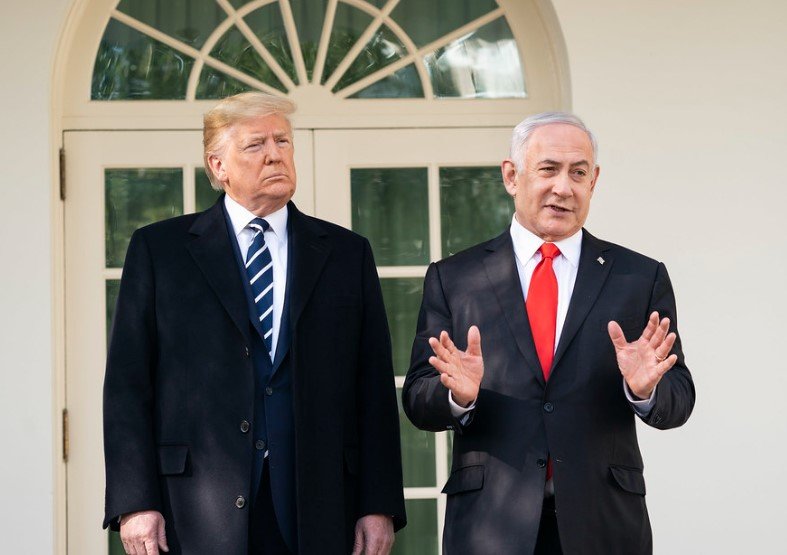Cairo’s call for calm meets White House silence on long-term plans as Israel resumes major operations in Gaza
As Israeli Prime Minister Benjamin Netanyahu stood beside U.S. President Donald Trump in the Oval Office on Monday, warplanes were once again pounding parts of Gaza. What started as a brief photo-op meeting turned into a stark contrast between hard diplomacy in Washington and a growing international chorus calling for a ceasefire.
While the White House played it close to the chest — no press conference, no big statements — leaders from France, Egypt, and Jordan had already laid their cards on the table hours earlier in Cairo.
A Deepening Divide on Gaza’s Future
Monday wasn’t just another day of diplomacy.
In Cairo, French President Emmanuel Macron, Egyptian President Abdel-Fattah el-Sissi, and Jordan’s King Abdullah II released a joint declaration that made their demands crystal clear: an immediate ceasefire, the restoration of humanitarian aid, and — critically — the handover of Gaza’s governance to a reformed Palestinian Authority.
Meanwhile, in Washington, Trump and Netanyahu focused on hostages and security.
One sentence here.
That growing gap in messaging could have real consequences for the region.

Hostages Take Center Stage in White House Talks
The Oval Office meeting between Trump and Netanyahu was brief — reporters were allowed in only for a short session, where both leaders stayed on message.
Trump said returning the hostages held by Hamas was his “top priority.” Netanyahu echoed the sentiment, stressing that Israel wouldn’t back down until all captives were home.
That’s about all we got.
No new ceasefire proposal. No redevelopment blueprint. No updates on U.S. involvement in long-term planning for Gaza’s future.
It felt more like a holding pattern than a breakthrough moment.
What Led to the Latest Escalation?
Let’s rewind a bit.
On March 18, Israel restarted major military operations in Gaza, effectively ending a ceasefire that had held — shakily — since January 19. The Israeli government said the move was prompted by Hamas’ refusal to release hostages. Hamas, on the other hand, accused Israel of deliberately escalating the situation.
One sentence here.
Since then, the situation has rapidly deteriorated.
According to Gaza health officials, over 1,200 people have been killed since operations resumed, and aid organizations have reported near-total collapse of basic services in key areas. Food, water, and fuel shortages are hitting hardest in the south.
Egypt, France, Jordan Offer a Political Roadmap
While Washington discussed tactics, Cairo focused on the endgame.
Macron, el-Sissi, and King Abdullah are not simply calling for a ceasefire. They’re trying to sketch a vision for what happens next — and they want the world to listen.
The three leaders jointly stated that:
-
Gaza must not be subject to forced displacement
-
The Palestinian Authority must return to administer the territory
-
Hostages and detainees on all sides must be released immediately
And here’s the kicker — they want the international community to begin laying the groundwork for a two-state solution, something that hasn’t seen serious traction in years.
Timing Matters More Than Ever
This all unfolded on a day that was already politically charged.
A planned joint press conference between Trump and Netanyahu was quietly scrapped. No reason was given. Reporters instead lobbed questions during the brief Oval Office spray, which added to the sense that something behind the scenes was off.
Back in Cairo, however, the leaders were full-throated in their urgency. Egypt, in particular, fears a spillover. Any large-scale displacement from Gaza into Egyptian territory could ignite a domestic and regional crisis.
Jordan has similar fears, and France is keen to avoid a diplomatic vacuum in the region — especially as public outrage over civilian casualties grows across Europe.
Here’s how Monday looked on the diplomatic scoreboard:
| Location | Key Players | Main Focus | Notable Outcomes |
|---|---|---|---|
| Washington | Trump, Netanyahu | Hostage crisis, security | No new agreements; canceled press conference |
| Cairo | Macron, el-Sissi, King Abdullah II | Ceasefire, PA rule, aid access | Joint statement with political roadmap |
The Silence on Gaza’s Long-Term Future
Perhaps the most glaring omission from the Trump-Netanyahu meeting? Any mention of long-term reconstruction or who will govern Gaza after the dust settles.
This silence speaks volumes.
Trump has floated controversial ideas for Gaza in the past — including outsourcing reconstruction to regional powers or placing international oversight on the Strip. Those ideas never gained much traction, and many were met with outright rejection from Palestinians and human rights groups.
The Cairo summit made it clear: Gaza’s future must include Palestinian leadership, and any plan that ignores this risks inflaming tensions further.
One sentence here.
That’s a message the Biden administration before him had started to take seriously. Trump, this time, didn’t touch it.
What Comes Next?
It’s a murky road ahead.
With no clear ceasefire in sight, and military operations continuing in Gaza, the humanitarian picture will likely worsen. At the same time, calls for accountability — and a political process — are growing louder by the day.
Egypt, Jordan, and France are trying to fill the vacuum. But without American backing, any peace push will be swimming upstream.
What’s clear is that the world isn’t waiting for Washington to lead. It’s already moving. Whether the U.S. decides to get serious about shaping Gaza’s post-war future — or just continues managing the crisis — remains to be seen.
